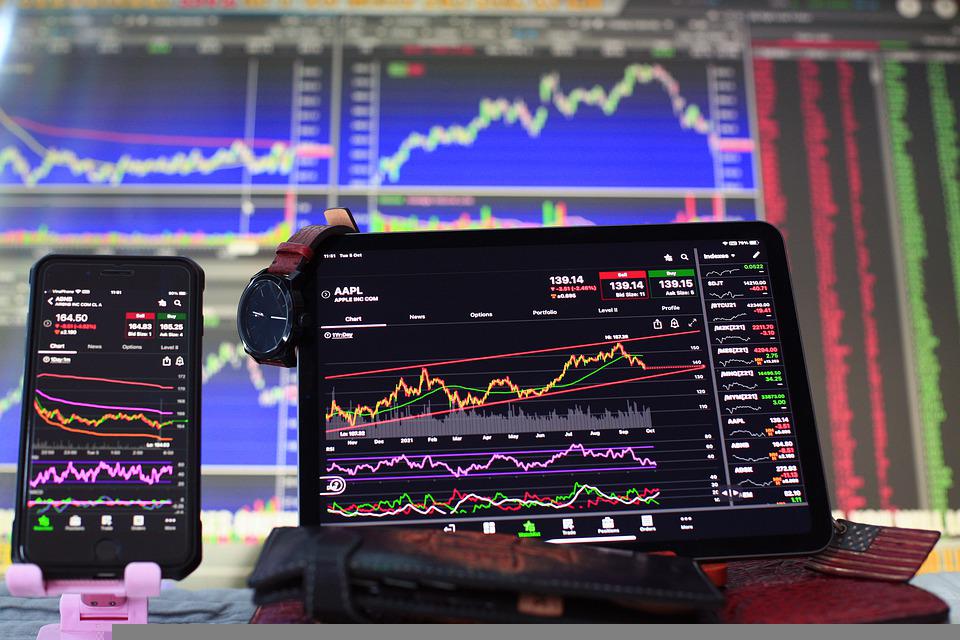MACD for stocks day trading

Introduction
Daytrading is an active form of investment that involves buying and selling of stocks within the same day. Daytraders use various technical indicators during their trades and MACD or Moving Average Convergence Divergence is one such indicator that has found its place with daytraders. The MACD line is a 9-day EMA (exponential moving average) of the difference between 12-day EMA and 26-day EMA. To understand this better, let's look at what EMA is. Exponential moving average (EMA) is a trend following indicator like all moving averages…
Daytrading is an active form of investment that involves buying and selling of stocks within the same day.
Daytrading is an active form of investment that involves buying and selling of stocks within the same day. Daytrading is a high-risk form of investing, and as such it can result in significant gains or losses on any given day. The risks involved with daytrading are not always obvious because they don’t affect you right away. You might have done your research and feel confident that you will be able to make money from day trading, but it’s important to know how this kind of investing affects your overall portfolio strategy before diving in headfirst.
Daytraders use various technical indicators during their trades and MACD or Moving Average Convergence Divergence is one such indicator that has found its place with daytraders.
The MACD is a trend following indicator. It uses the difference between two exponential moving averages (EMA) of a security's price and its MACD line to determine the trend direction. You can use this information to predict when to enter or exit your positions based on whether you expect prices to rise or fall in the future. The strength of the trend can be determined by measuring how far away from zero your signal line is, while duration can be estimated by considering how long it takes for an uptrending bar or downtrending bar to form after a crossover between lines occurs.
The MACD line is a 9-day EMA of the difference between 12-day EMA and 26-day EMA. To understand this better, let's look at what EMA is.
The MACD line is a 9-day EMA of the difference between 12-day EMA and 26-day EMA. To understand this better, let's look at what EMA is.
The exponential moving average (EMA) is an indicator that smooths out price data by eliminating short-term fluctuations. It does this by ignoring day-to-day changes in price and only focusing on longer term trends. The purpose of using an EMA rather than a simple moving average (SMA), which ignores both the direction and magnitude of price change, is to reduce variance in your trading system while preserving its power as an indicator.
Exponential moving average (EMA) is a trend following indicator like all moving averages. Exponential moving averages put more weight on recent prices than on past prices.
The EMA is a trend following indicator, like all moving averages. It is a lagging indicator that places more weight on recent prices than older ones. The longer the period of your EMA, the slower it reacts to price changes because it incorporates more data into its calculation. This makes it an effective smoothing tool for identifying trends in the stock market and determining overbought or oversold conditions.
The EMA can also be used as a momentum indicator by smoothing out noise in order to identify changes in velocity at various times during a trade cycle (bullish or bearish). In other words, it helps identify when price activity levels off before reversing course so that traders can enter into positions while there’s still upside potential left (or exit theirs).
Additionally, many charting platforms offer different types of moving averages: exponential (EMA), linear (LWMA), weighted average (WMA), triangular (TRIMA), adaptive exponential moving average (AEMA), adaptive linear weighted moving average (ALWMA) and adaptive triangular weighted moving average system with lag equalization filter."
The bigger the difference between the two EMAs, the higher is the value of MACD. This means that it will move more rapidly when the two EMAs diverge either because of an increased uptrend or downtrend.
You can use this indicator to determine whether there are any changes in the trend. If the difference between the two EMAs is relatively large, which means that both lines are moving in opposite directions, then you need to be careful because it means you may be entering a new phase of your trading.
MACD Line signals are given by crossing a signal line which is an 8-day SMA (simple moving average) of the MACD line itself.
A signal line, also called a trigger line, is a moving average that crosses the zero-line. When this happens it signals that there is more trading activity taking place than usual. MACD Histogram is a momentum indicator that uses two exponential moving averages to plot trends in price changes. A histogram can either be used to represent an entire market or just one stock. The longer histogram bars are usually considered to be more bearish (or negative) than shorter ones because they indicate slower accumulation of price change or changes in distribution over time periods after large moves have occurred (i.e., long sideways stretches).
MACD is an effective tool in daytrading and requires some basic understanding from stock traders
The MACD is an effective tool in day-trading and requires some basic understanding from stock traders. The MACD is used to determine the trend of a stock, its price direction and its strength.
Conclusion
I hope this article has given you an insight into the MACD indicator, which is an effective tool in daytrading. In the next section, I will give you an overview of how to use MACD to trade stocks.

